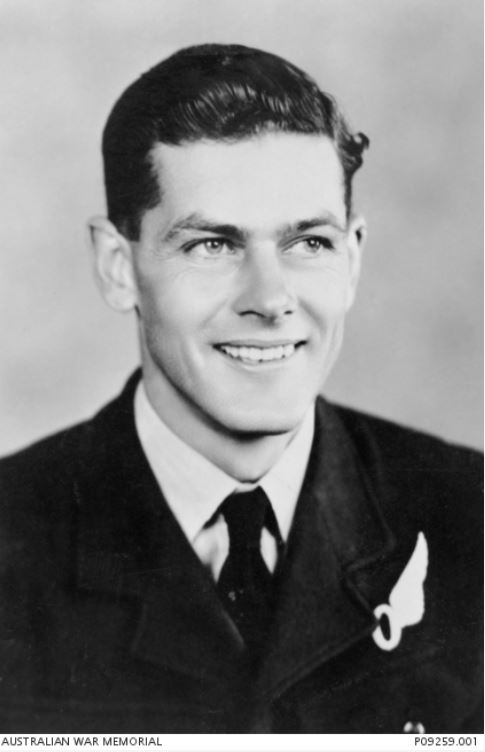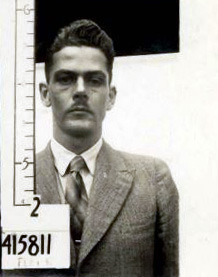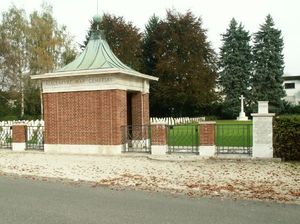Maxwell Wellman Marsh
From Our Contribution
 | |
 | |
| Personal Information | |
|---|---|
| Date of Birth | 31 Oct 1911 |
| Place of Birth | Armadale, Western Australia |
| Death | 7 Jul 1944 |
| Place of Death | Austria |
| Age at Enlistment | 30 years, 3 months |
| Description |
6'0½ (1.84m) tall ; 152lbs 68.946 kg ; medium complexion ; brown eyes ; dark brown hair |
| Occupation | Farmer |
| Religion | Church of England |
| Address | Pingelly, Western Australia |
| Next of Kin | Father , Mr Wellman Marsh |
| Military Information | |
| Reg Number | 41581 |
| Date of Enlistment | 1 Feb 1942 |
| Rank | Warrant Officer |
| Unit/Formation | No. 40 Squadron RAF |
| Post War Details | |
| Fate | KIA aerial battle |
| Monument(s) | WA State War Memorial |
| Australian War Memorial | Australian War Memorial |
| Medals |
1939-45 Star Aircrew Europe Star War Medal 1939-45 Australian Service Medal 1939-45 |
Pre War
Max had served from 1930 - 1933 withtheArmy's 10th Light Horse Rergiment. Electoral Roll entries: 1936 at Dattening, Pingelly, farmer; 1937 Hillsprings Station, Carnarvon, jackeroo ; 1943 at Marshlands, West Pingelly, farmer.
War Service
Max enlisted at No. 4 RAAF Recruiting Centre in Perth on 1 Feb 1942, mustered as Air Crew TG V. He was posted the same day to No. 5 Initial Training School RAAF at Clontarf to begin his training. Max was promoted Leading Aircraftman on 20 Jun 1942 and at the same time re-mustered as Aircrew (Observer) TG II. His next move was on 22 Jul 1942 when he was transferred to No. 2 Air Observers School RAAF at Mt Gambia in South Australia. On 17 Oct 1942 his posting changed to No. 2 Bombing & Gunnery School RAAF at Port Pirie to undertake the No. 27 Air Observer's Course from 19 Oct to 10 Dec 1942. His final training school in Australia was No. 2 Air Navigation School RAAF at Nhill in Victoria on 13 Dec 1942 where he participated in an Astro Navigation course from 14 Dec 1942 until 7 Jan 1943. On completion of the course he was promoted Temporary Sergeant and re-mustered as Air Observer TG I.
On 24 Jan 1943 he was on strength with the No. 5 Embarkation Depot RAAF, remaining with them for a month before moving to No. 1 Embarkation Depot RAAF at Ransford in Victoria. On 6 Mar 1943 Max embarked in Melbourne for the U.K., disembarking there on 4 Jun 1943, seconded to the RAF. He was initially sent to No. 11 Personnel Despatch & Receiving Centre RAAF on 5 Jun 1943. Max was promoted Temporary Flight Sergeant on 7 Jul 1943. On 3 Aug 1943 Max was posted to No. 21 Operational Training Unit RAF, but the 4 Aug 1943 he was admitted to RAF Hosptial Innsworth with Acute Sinusitis and then dettached to No. 7 School of Technical Training RAF from 19 Aug 1943 until 8 Oct 1943. During that time on 4 Aug 1943 Max was admitted with Acute Sinusitis to RAF Hospital Innsworth, before being released to Camp Myles, Standish, Taunton on 3 Sep 1943. before being admitted on 8 Oct 1943 to USAF Hospital Massachusetts.
Betweenmid October 1943 and late February 1944 Max was detached to a range of training units to finalise his training for Navigating a Wellington bomber over Europe. He joined No. 40 Squadron RAF at Foggia on Italy's east coast on 10 Mar 1944.
Wellington LP-195 took off at 9:52pm on 6 Jul 1944 from Foggia Main landing ground, Italy, detailed to attack Feuersbrunn drome near Vienna. The formation of Squadron aircraft encountered German fighters and three of the aircraft, including the one Max was the Air Bomber on (LP195) were shot down in close proximity to St Polten, approx. 57 kilometers west of Vienna. All the crews in the three Squadron aircraft were killed. Max's fellow airmen in LP 195 were:
Crew:
- RAAF 418811 PO R.T. Collins, - Pilot
- RAAF 418923 Flt Sgt R C Dalton, - Navigator
- RAF Sgt D W Nicholls, - Wireless Operator Air
- RAAF 415811 WO M W Marsh, - Air Bomber
- RAF Sgt V Charles, - Air Gunner
The crews of the three aircraft including LP195 are buried in the Klagenfurt War Cemetery, Austria. Klagenfurt is the capital of the Austrian Province of Carpinthia.[1]
Max's records indicate thet he was promoted Temporary Warrant Officer on 7 Jul 1944.
Notes
In November 1940 No. 40 Squadron RAF converted to the Vickers Wellington IC, and spent the next year operating as a night bomber squadron with Bomber Command. In October 1941 the squadron's aircraft were flown to Malta, where they operated against targets in Italy and North Africa until May 1942 when the squadron was re-equipped with Vickers Wellington Mk III's. By the time Max joined the Squadron they were flying the Vickers Wellington X model from Foggia Main airfield in Italy against targets in northern Italy and the Balkans. They were still operating out of Foggia when Max failed to return.
- ↑ RAAF World War 2 Fatalities: v. 2 - RAAF WW2 fatalities RAF squadrons 1 to 50 volume 2 - compilation by Alan Storr

